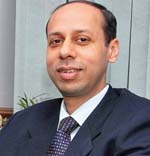Q. You have worked with both foreign and Indian business leaders. What basic differences have you noticed?
A. Foreign leaders are generally high on collaboration and communication. They are high on social skills with a knack of communicating tough messages in a non-threatening way.
Q. What are the strengths and USPs of Indian leaders?
A. Indian business leaders are particularly strong in strategy formulation and business analytics. They have the ability to understand and navigate the dynamic business environment.
Q. To what extent are Indian leaders aligned with the expectations of the workforce?
A. This is a very broad question and difficult to generalise. I believe closer the leader has his ears to the ground, the more will he or she be aligned with the expectations of the employees. But that is just a starting point. A leader’s key role is actually to help the employees calibrate and align their expectations with those of the organisation.
Q. What does an Indian employee expect from his or her leader?
A. Employees want their leader to help them set their goals, clarify how they are aligned with the organisation, and give them all the support and resources to do their job.
Q. What is the perfect leadership style in Indian context?
A. Leadership styles need to vary depending on the nationality. A leader should have the ability to direct, support, encourage, and empower his or her employees and identify the appropriate style to be used.
























